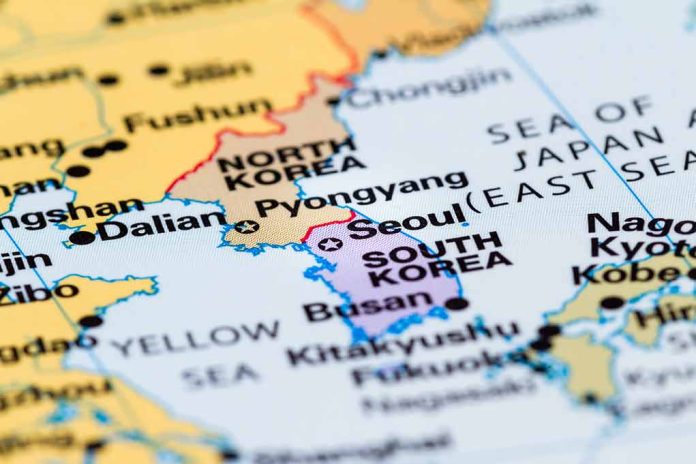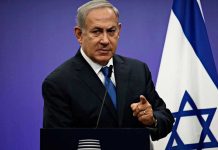
South Korean troops fired warning shots at North Korean soldiers who crossed their border, forcing them to retreat in an incident highlighting tensions on the world’s most heavily fortified frontier.
Top Takeaways
- About 10 North Korean soldiers briefly crossed the border at the eastern section of the DMZ on Tuesday, prompting warning broadcasts and shots from South Korean forces.
- Some North Korean troops were armed and wearing bulletproof vests, though they were also carrying construction tools, suggesting non-hostile intent.
- The DMZ remains one of the world’s most dangerous borders, with over 1 million mines and extensive military fortifications along its 155-mile length.
- The incident occurs amid heightened regional tensions as North Korea continues to expand its nuclear program and strengthen ties with Russia.
Border Breach Prompts South Korean Response
On Tuesday afternoon, approximately ten North Korean soldiers crossed the heavily fortified border separating the two Koreas, triggering an immediate response from South Korean forces. The incident occurred around 5 p.m. local time in the eastern section of the border zone, an area marked by rugged terrain and sometimes unclear demarcation. South Korean military officials responded with standard protocols, first broadcasting warnings and then firing warning shots when the North Korean troops failed to immediately retreat.
This confrontation, while brief, underscores the persistent tensions between the two nations that technically remain at war, as the Korean conflict ended with an armistice in 1953 rather than a formal peace treaty. According to South Korean defense officials, the North Korean soldiers were carrying construction tools, suggesting their crossing may not have been a deliberate provocation. However, the fact that some were armed and wearing bulletproof vests raised immediate concerns about potential hostile intent.
The World’s Most Dangerous Border
The Demilitarized Zone (DMZ) that separates North and South Korea remains one of the most heavily fortified borders in the world, despite its misleading name. Stretching 155 miles across the Korean Peninsula and 2.5 miles wide, this buffer zone is filled with an estimated one million landmines and extensive military fortifications. Established following the 1953 armistice, the DMZ stands as a stark physical reminder of the unresolved tensions between the two Korean states.
Both sides maintain constant vigilance along the border, with incidents like Tuesday’s crossing relatively rare but potentially dangerous. South Korean defense officials indicated they would maintain heightened monitoring of North Korean activities near the border region. The ambiguity surrounding the North Korean soldiers’ intentions, construction work versus military provocation, highlights the challenges in interpreting actions along this contested boundary, where even minor misunderstandings can escalate quickly.
Regional Tensions and Nuclear Concerns
This border incident takes place against a backdrop of increasing regional tensions. North Korea has dramatically accelerated its nuclear and missile development programs in recent years while strengthening its relationship with Russia. Pyongyang has consistently rejected calls for denuclearization talks from both Seoul and Washington, choosing instead to expand its military capabilities and conduct increasingly provocative weapons tests.
South Korea’s response capability is particularly important as the nation currently faces political uncertainty following President Yoon Suk Yeol’s recent ouster. Despite this domestic tumult, the South Korean military maintains its readiness posture along the border.
Historical Context and Future Implications
Border incidents between North and South Korea, while concerning, have a historical precedent. The DMZ has witnessed numerous violations since its establishment, ranging from infiltration attempts to firefights. What makes this latest incident notable is its timing amid North Korea’s increasing isolation from the international community and its growing partnership with Russia. Defense analysts note that while this specific crossing appears to have been non-deliberate, it demonstrates how quickly tensions can flare along this volatile frontier.
The incident further highlights the strategic importance of the US-South Korea alliance as a cornerstone of American security policy in the Indo-Pacific region. The complex security dynamics of the Korean Peninsula remain a critical foreign policy challenge for any American administration. The immediate, measured response by South Korean forces to this border crossing demonstrates their continued vigilance in maintaining security along one of the world’s most dangerous frontiers.
Sources:
- South Korea’s military fires warning shots after North Korean soldiers cross the border
- South Korea says about 10 North Korean troops crossed their border so it fired warning shots
- South Korea says its military fired warning shots after North Korean soldiers crossed the border







